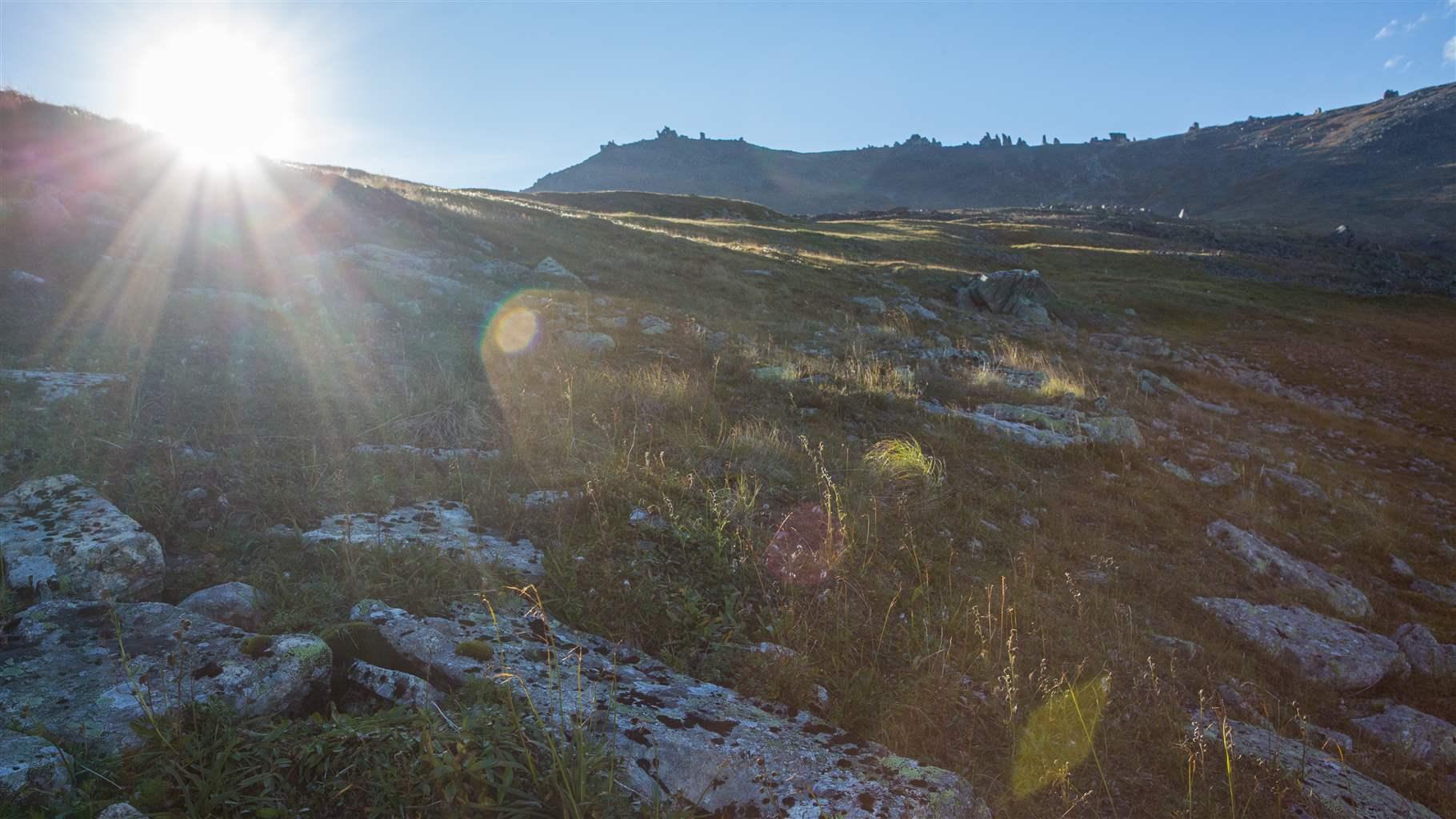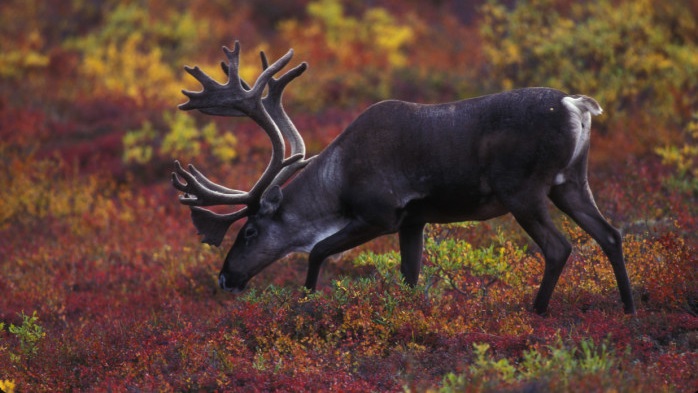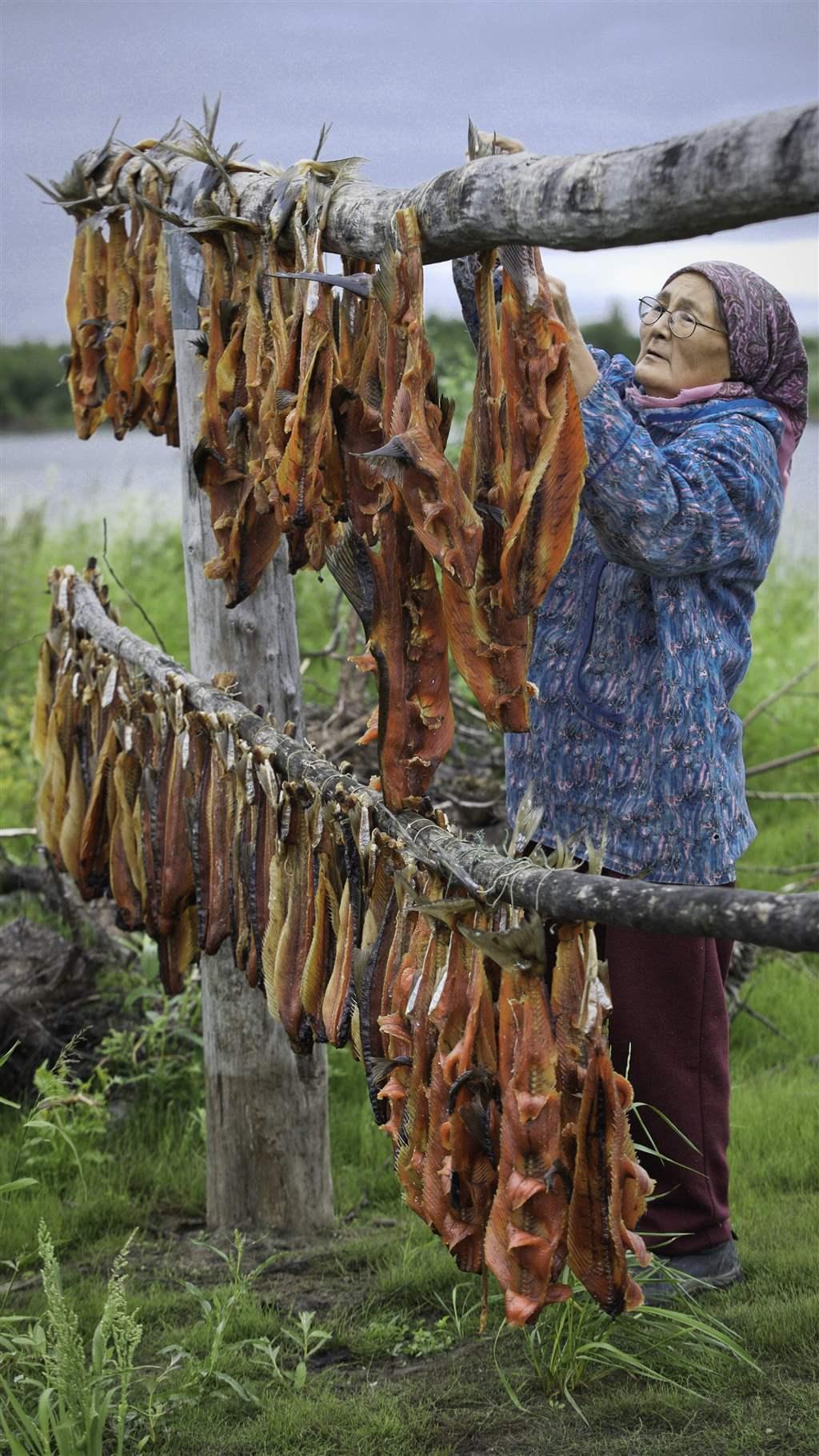Will the Federal Government Reverse Course, Retain Protections on Intact Alaskan Landscapes?
Lifting of D-1 public land orders would open roughly 38 million acres to mining, other development

This issue brief is part of a series outlining public lands in Alaska that are in danger of losing protection.
Overview
Since 2016, the U.S. Bureau of Land Management (BLM) and the U.S. Forest Service have advanced five efforts that would dramatically alter protections for some 60 million acres of federally managed land in Alaska. If fully enacted, the policies and decisions outlined in those proposed and finalized plans would open vast stretches of the Bering Sea-Western Interior, Tongass National Forest, Central Yukon, National Petroleum Reserve-Alaska (NPR-A), and unencumbered BLM land to extractive development and have significant impacts on Alaska’s lands, rivers, wildlife, and the Indigenous peoples who call these landscapes home.1
Without revision, BLM plans will further undermine Alaska land protections
In 1971, the Alaska Native Claims Settlement Act (ANCSA) temporarily withdrew roughly 56.9 million acres of BLM-managed lands from possible development and directed the secretary of the interior to conduct a review to determine whether any of those lands should be permanently excluded from industrial use. The withdrawals, which came to be called D-1, were intended to protect the public interest and limit development on land available to satisfy land claims from the state and native corporations established under the act.2
In 2004, Congress passed the Alaska Land Transfer Acceleration Act to resolve various land claim and transfer issues that arose from ANCSA and from the 1958 law that made Alaska a state. As required in the transfer acceleration act, BLM produced a report that detailed its progress on Alaska land transfers and recommended that the secretary revoke D-1 withdrawals from approximately 50.1 million acres of BLM-managed land in Alaska and maintain them on roughly 6.7 million additional acres.3 The report further advised that the agency’s standard land use planning process provided the most appropriate venue for review of the withdrawals.4 In keeping with the report’s guidance, BLM has finalized five management plans since 2005 that advocate lifting almost all D-1 protections from BLM-managed land in its planning areas.5 Final revocation of those orders, however, can be made only by the secretary of the interior, pursuant to recommendations in BLM plans.6
From October 2018 to Jan. 19, 2021, the Department of the Interior opened more than 11.2 million acres of BLM Alaska land to mining with only a Federal Register announcement as public notice.7 BLM has two additional active resource management plans in process, and those will determine the future of another roughly 27 million acres.8 If those plans are implemented as drafted, the department’s actions since 2018 would constitute one of the largest openings of public land to extractive development in contemporary American history.
In addition, in December 2018, Congress passed the Vietnam Veteran Allotment Act, allowing the 2,200 eligible Indigenous veterans who were serving in Vietnam during the original allotment period to apply for land claims.9 However, BLM’s interpretation of the act has put Indigenous people in a difficult position by requiring that all D-1 orders be lifted before these veterans may apply for allotments. This approach is disproportionate, potentially removing protections from tens of millions of acres to accommodate approximately 352,000 acres of veteran allotments and forcing Indigenous peoples to choose between their veterans’ rightful claims and the essential landscapes that have nurtured their communities for millennia.10
All together, these plans would open roughly 38 million acres of pristine habitat to extraction activities. But before they are finalized, the Biden administration has an opportunity to work with Indigenous communities to resolve the question of the future of D-1 withdrawals by creating enduring administrative protections that maintain landscape productivity and ecosystems that support tribal communities’ way of life.
An ecosystem and a way of life at risk
Indigenous communities have asked the federal government not to open all available federally managed acres to development and have urged conservation of important watersheds and spawning areas that are the cornerstones of biological diversity and community food security.11 But despite the scale of potential harm, no public input process or other notice is required before the Department of the Interior revokes D-1 protections, leaving Indigenous peoples with no official avenue to oppose the threat to the environment and the traditional way of life.12
Among the diverse intact ecosystems that will be affected are tundra landscapes, the Yukon and Kuskokwim rivers (the longest in Alaska), coastal estuaries, highly productive salmon streams, caribou calving grounds, and habitat critical to migratory birds.13 Also threatened are hunting grounds for more than 100 Indigenous Alaska communities, and lands that border national parks, wildlife refuges, and forests.14
Twenty tribes have asked BLM to protect critical watersheds and landscapes across the state. In a June 13, 2019, letter to BLM’s Alaska director about the Bering Sea-Western Interior plan, the tribes identified specific culturally important areas for protection, but BLM nevertheless proposed to open 99% of the land to mining and development.15
By collaborating with the tribal communities that know these lands most intimately, the new federal administration can safeguard Indigenous cultural and food resources, protect millions of acres of the nation’s most pristine land, and provide for sustainable development.
Endnotes
- Bureau of Land Management, “Bering Sea-Western Interior RMP/EIS,” U.S. Department of the Interior, https://www.blm.gov/programs/planning-and-nepa/plans-in-development/alaska/BSWI; Bureau of Land Management, “Central Yukon RMP/EIS,” U.S. Department of the Interior, https://www.blm.gov/programs/planning-and-nepa/plans-in-development/alaska/central-yukon-rmp; U.S. Forest Service, “Alaska Roadless Rulemaking,” U.S. Department of Agriculture, https://www.fs.usda.gov/project/?project=54511; Bureau of Land Management, “National Petroleum Reserve in Alaska IAP/EIS,” U.S. Department of the Interior, https://www.blm.gov/planning-and-nepa/plans-in-development/alaska/npr-a-iap-eis; Bureau of Land Management, “Revoking D-1 Withdrawals,” U.S. Department of the Interior, https://www.blm.gov/programs/lands-and-realty/regional-information/alaska/d-1_withdrawals/revocation.
- Bureau of Land Management, “Alaska D-1 Withdrawals,” https://www.blm.gov/programs/lands-and-realty/regional-information/alaska/d-1_withdrawals; Alaska Public Law 92-203 (1971), https://www.govinfo.gov/link/statute/85/688.
- U.S. Land Transfer Acceleration Act, Public Law 108-452 (2004), https://www.congress.gov/108/plaws/publ452/PLAW-108publ452.pdf; Congressional Research Service, “The Alaska Land Transfer Acceleration Act: Background and Summary” (2005), https://www.everycrsreport.com/files/20050114_RL32734_a3fcb1c34b3f1ebcefb32dbf4a654395b55d7287.pdf.
- Bureau of Land Management, “Alaska D-1 Withdrawals.”
- Bureau of Land Management, “BLM National NEPA Register—National Petroleum Reserve in Alaska Integrated Activity Plan,” https://eplanning.blm.gov/eplanning-ui/project/117408/510; Bureau of Land Management, “Kobuk-Seward Peninsula Approved Resource Management Plan” (https://www.arlis.org/docs/vol1/A/251529143/approved_ksprmp_web.pdf; Bureau of Land Management, “East Alaska Proposed Resource Management Plan and Final Environmental Impact Statement” (2006), https://eplanning.blm.gov/epl-front-office/projects/lup/66965/83528/100157/Volume_1_combined.pdf; Bureau of Land Management, “The Bay Resource Management Plan Scoping Report” (2005), https://eplanning.blm.gov/epl-front-office/projects/lup/66958/82401/98066/Scoping_Report_June_2005.pdf; Bureau of Land Management, “BLM Approves Management Plan for Alaska’s Eastern Interior,” Jan. 5, 2017, https://www.blm.gov/press-release/blm-approves-management-plan-alaskas-eastern-interior.
- Bureau of Land Management, “Revoking D-1 Withdrawals.”
- Public Land Order No. 7899; Partial Revocation of Public Land Orders No. 5169, 5170, 5171, 5173, 5179, 5180, 5184, 5186, 5187, 5188, 5353, Alaska, Fed. Reg. 5236-46 (Jan. 19, 2021), https://www.federalregister.gov/documents/2021/01/19/2021-01111/public-land-order-no-7899-partial-revocation-of-public-land-orders-no-5169-5170-5171-5173-5179-5180; Public Land Order No. 7874; Partial Revocation of Public Land Orders No. 5179, 5180, 5181, 5184, and 5188, Alaska, Fed. Reg. 50117-19 (Oct. 4, 2018), https://www.federalregister.gov/documents/2018/10/04/2018-21641/public-land-order-no-7874-partial-revocation-of-public-land-orders-no-5179-5180-5181-5184-and-5188; Public Land Order No. 7879; Partial Revocation of Public Land Orders No. 5173, 5178, 5179, 5180, 5184, 5186 and 5187, Alaska, Fed. Reg. 32946-50 (July 10, 2019), https://www.federalregister.gov/documents/2019/07/10/2019-14709/public-land-order-no-7879-partial-revocation-of-public-land-orders-no-5173-5178-5179-5180-5184-5186; Public Land Order No. 7880, Partial Revocation of Public Land Orders No. 5176 and 5179, Alaska, Fed. Reg. 32945-46 (July 10, 2019), https://www.federalregister.gov/documents/2019/07/10/2019-14708/public-land-order-no-7880-partial-revocation-of-public-land-orders-no-5176-and-5179-alaska.
- Bureau of Land Management, “Central Yukon RMP/EIS”; Bureau of Land Management, “Bering Sea-Western Interior RMP/EIS.”
- U.S. Public Law No. 116-9 (03/12/2019) [116th Congress Public Law 9] (2019), https://www.congress.gov/bill/116th-congress/senate-bill/47/text.
- Bureau of Land Management, “Eligible Alaska Native Veterans Can Get Up to 160 Acres of Federal Land,” 2019, https://www.blm.gov/programs/lands-and-realty/regional-information/alaska/land-transfer/ak-native-allotment-act/alaska-native-vietnam-veterans-land-allotment.
- Associated Press, “Alaska Tribal Groups Oppose Federal Plan to Allow Mining,” Jan. 6, 2020, https://apnews.com/article/d0af1a8950d7e530a32e99e5d84f9750; Alaska Tribal Commission, letter to Tom Heinlein, district manager, and Bonnie Million, field manager, Bureau of Land Management, tribes’ comments on the Bureau of Land Management Bering Sea-Western Interior Draft Resource Management Plan and Draft Environmental Impact Statement, June 13, 2019.
- Alaska Public Law 92-203.
- “The 10 Longest Rivers in Alaska,” World Atlas, July 17, 2018, https://www.worldatlas.com/articles/the-10-longest-rivers-in-alaska.html.
- Bureau of Land Management, “National Petroleum Reserve in Alaska Integrated Activity Plan”; Bureau of Land Management, “Kobuk-Seward Peninsula Approved Resource Management Plan”; Bureau of Land Management, “East Alaska Proposed Resource Management Plan and Final Environmental Impact Statement”; Bureau of Land Management, “The Bay Resource Management Plan Scoping Report”; Bureau of Land Management, “BLM Approves Management Plan for Alaska’s Eastern Interior,” news release, Jan. 5, 2017, https://www.blm.gov/press-release/blm-approves-management-plan-alaskas-eastern-interior; Public Land Order No. 7899; Bureau of Land Management, “Bering Sea-Western Interior RMP/EIS”; Bureau of Land Management, “Central Yukon RMP/EIS.”
- BLMWild, “20 Alaska Native Tribes Urge BLM to Give Serious Consideration to Tribal Concerns,” BLMWild (blog), Medium.com, June 17, 2019, https://medium.com/blmwild/20-alaska-native-tribes-urge-the-bureau-of-land-management-to-give-serious-consideration-to-tribal-467f10000bc6; Alaska Tribal Commission, letter.














